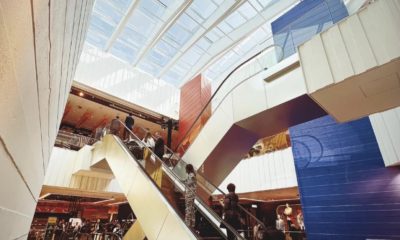THE COMMON PERCEPTION is that retail is a binary relationship between the brand and the customer. But there are so many contributors to the retail process even before the goods are brought to market. Retail is an intricate collaboration between the store, the landlord, the lending institutions, suppliers, shopfitters, fixture and equipment suppliers, marketing executives, logistics experts, and of course, visual merchandisers and store designers. Visual merchandising and store design has always been a science and an art. The fact that art and creativity will help pave the road forward is a given. The fact that science will define the lanes and map the direction of the road is a reality. Today, science is more important than ever before.
The path forward will be defined by three words: creativity, adaptation and innovation. However, it must be noted that those words will only lead to the desired destination if they’re built on a culture of empathy and caring. The past three months have clearly been troubling and disconcerting. The world as we knew it has forever changed. If retailers are smart, they’ll understand the changes and the opportunities presented by the resultant redirection of customer behavior. If they’re both strategic and empathetic, they’ll restore customer confidence and give them a reason to return to their stores.
E-commerce is now the backbone of business; retailers have to meet customers where they are. Going forward, retailers will either reimagine, reshape and revamp, or simply retreat into oblivion. The times demand a cultural shift from reactive responses to proactive strategies. The businesses that won’t survive are the ones that were already outdated. We have all witnessed many pre-pandemic store closures over the past few years. It’s important to note that many of the stores that closed their doors were the ones doing the same thing that they have done for the past 50 years.
Companies that weather the current storm will embrace e-commerce while recognizing that the physical store environment remains the most important touchstone of the brand. “While customer behavior has changed, most people still crave social interaction,” said Dimple Manghani, Principal at MBH Architects (Alameda, Calif.). “It’s our responsibility however, to provide healthy and safe interactions. We have to provide a feeling of safety within store environments both physically and psychologically.”
Shopper expectations have shifted from experiential retail to safe shopping environments. Before the coronavirus pandemic, experience was a product offering. Now, stores must consider safety and wellness as product offerings. Moreover, in keeping with their health concerns, customers will also look to stores that consider the health and wellbeing of their employees.
Going forward, retail stores will look quite different than they did before. While confronting our new reality, we must begin to define a new normal. As stores begin to reopen, it’s important to communicate safety procedures in the form of daily online updates even before store visits resume. When customers do return to the physical store, provide an ample and adequate decompression zone at the entrance, allowing for a smooth transition or segue from the street or mall, into the store. Consider this space as an opportunity to communicate important safety measures taken by the store, and to be taken by the customers as well. It is also important to develop defined wayfinding and circulation paths. One-way aisles should be established in order to promote a safe flow of traffic throughout the environment.
Advertisement
Digital connectivity is now more accelerated than planned. In the post-pandemic reality, digital will further enhance the customer relationship. Without it, there’s no way of connecting and knowing why customers come into the store, or why they stopped coming. Digital is a customer communication and feedback module. It allows for real-time dialogue between retailer and customer. Of equal importance is the symbiotic relationship between digital and physical retail. Order online, pick-up in store, whether at an in-store pick-up counter or curbside pick-up station. Click and collect is neat, clean, efficient and above all, safe.
New strategies should include a re-evaluation of spatial conditions, most notably allocation of merchandise groupings and fixture placement. “Have fewer fixtures, with fewer touchpoints,” suggests Manghani. “Strive to maximize in-store visits. Understand customer needs and have product at their fingertips. Also, suggest complementary items and associated merchandise to help make the in-store visit more efficient.”
As we go forward into uncharted waters, it is important to stay flexible. Remember, this isn’t change for the sake of change, but rather change for the sake of survival. This is an existential moment. If we are smart, the new reality will be a better place. Through change, retailers must strive toward a noble purpose. President John F. Kennedy once said, “Change is the law of life, and those who look only to the past or present are certain to miss the future.”

 Photo Gallery1 week ago
Photo Gallery1 week ago
 Headlines3 days ago
Headlines3 days ago
 Headlines1 week ago
Headlines1 week ago
 Headlines1 week ago
Headlines1 week ago
 Headlines1 week ago
Headlines1 week ago
 Designer Dozen7 days ago
Designer Dozen7 days ago
 Headlines1 week ago
Headlines1 week ago
 Headlines1 week ago
Headlines1 week ago





















